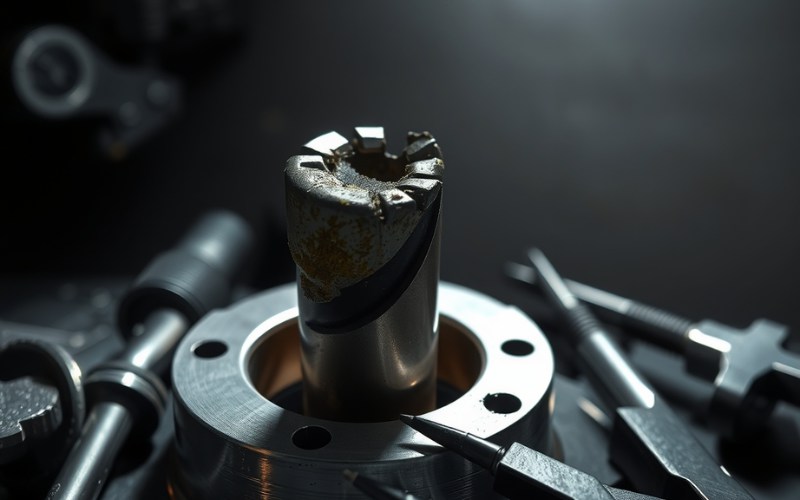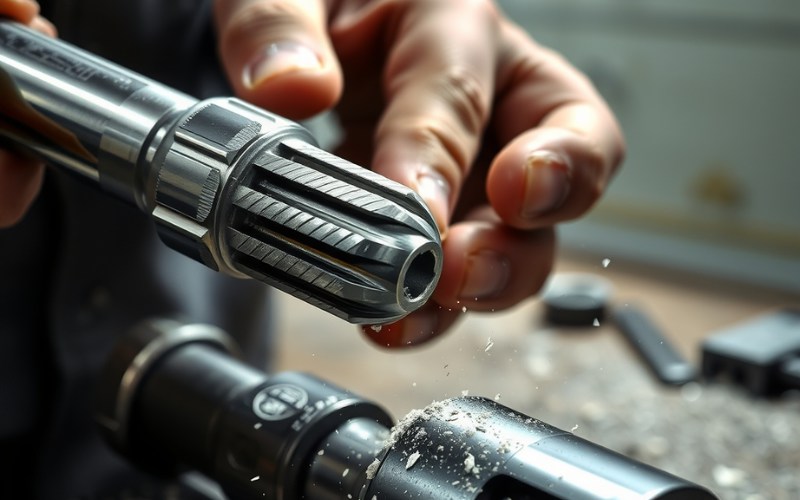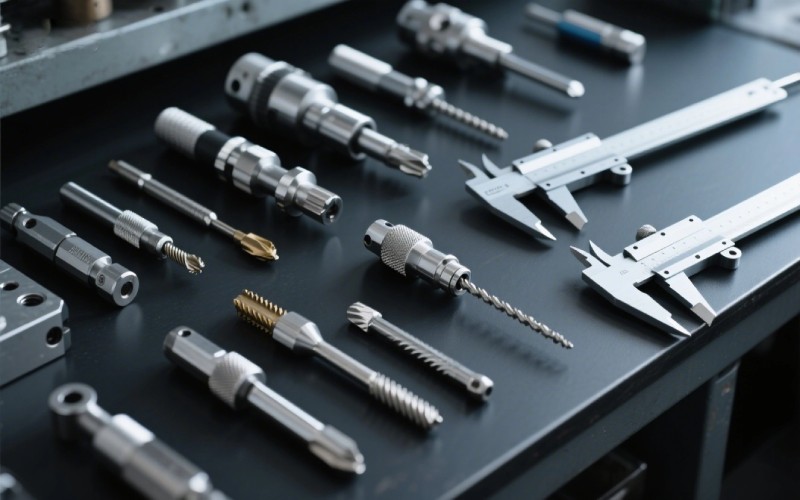Let Istar help you get started on your project with our experience and know-how!
Upload your design files and production requirements and we will get back to you within 30 minutes!

It’s a feeling every machine worker knows. You get a terrible feeling. You’re working on a part, maybe for a long time, and then it happens. Snap! A broken tap is now stuck deep inside a very important hole. You might think you have to throw the part away, but I’m here to tell you there’s hope. I’ve had this problem many times, and I’ve learned some good ways to remove broken taps without hurting the part.
In this article, I’m going to share what I’ve learned from my experiences. We will look at everything from easy hand tools to special machine shop methods. I’ll explain why you should learn how to remove a broken tap. Knowing these ways can stop you from having to scrap costly machined parts and waste a lot of time. This is my guide for turning a big problem into a small one.
I’ve learned that a broken tap doesn’t usually happen for no reason. Taps break when the twisting force is stronger than the tap. This can happen for a lot of reasons. Maybe the hole you drilled was too small for the thread size. Or maybe you didn’t use enough cutting fluid, which made too much rubbing. Sometimes, the tap is broken inside because it was old and worn out.
Another common problem is when the small metal pieces from cutting get stuck in the grooves of the tap. This is a big problem in a deep or bottom hole. The tapping process needs you to be careful. If the tap isn’t perfectly straight, it can get stuck and break. I’ve seen taps break in many kinds of materials, from aluminum to hard steel. Knowing why taps break is the first step. Knowing the reason helps you pick the right method to remove the tap. Breaking happens a lot, but it doesn’t mean you have to throw away the part.
Before you grab any tool, take a deep breath. The first thing I always do is clean the area around the broken tap. Use forced air to blow away loose metal bits from the hole and the grooves of the broken tap. It is important to see the problem clearly. Sometimes, a piece of the broken tap is loose enough to grab with pliers, but this does not happen often, especially if the tap is broken inside the hole.
Next, put on a good soaking fluid. Let the fluid soak into the internal threads to help loosen the broken tap. This makes it less tight and can make taking it out much easier. This easy step can sometimes be the solution that fixes the problem. It gets the part ready for the next method you choose and gives you a better chance of success. Don’t rush this; being patient now can stop a lot of trouble later.
Yes, sometimes you can manually get a broken tap out of the hole. If the broken tap is not stuck too tight, this is the first thing I try. One simple method is to use a punch or another hard, pointed tool. Put the punch on a broken edge of the tap and lightly hit it with a hammer. Hit it in the direction to unscrew it (to the left). This can sometimes be enough to break it free.
This method is easy because you don’t need special tools, but you must be very careful. If you hit it too hard, you could break the internal threads in the hole. I’ve found this works best on bigger taps where you can get a good spot to hit. It’s a slow job that needs a lot of patience. This is a good first step, but if the broken tap doesn’t move after a few tries, it’s time to move on to a better way to remove it.
When a simple punch doesn’t work, my next step is often a tap extractor. A tap extractor is a special tool made just for this problem. It has hard steel “fingers” that go into the grooves of the broken tap. Once the fingers are in, you use a tap wrench to hold the extractor. Then you carefully turn it to the left to get the broken tap out of the hole.
Using a tap extractor is a very good method. It is made just to remove broken taps without hurting the thread. You need the right size extractor for your broken tap and the right number of grooves (usually 2, 3, or 4). You must clean all the metal bits out first so the fingers can fit right. A good tap extractor is a great tool for any machine shop. It’s an easy to use solution that can save the part. It is the best way to remove a broken tap in many cases.

Using a chisel is another method I’ve used, but it needs a lot of care. This way works when the broken tap is big enough to make a small cut in it. You take a sharp, hard chisel. Then you carefully hit it with a hammer to make a small slot or line on the edge of the broken tap. Once you have a good cut, you can use the chisel or a screwdriver to hit the broken tap and turn it out.
I only use a chisel when I don’t have a tap extractor near me or when the extractor does not work. You have to be very, very careful not to hurt the thread in the hole. The goal is to push only on the broken tap. This method is best for holes that go all the way through. Sometimes you can push the broken tap out the other side. It’s not my first pick, but it’s a good skill to have when you’re in a hard situation.
Sometimes, you have to use a stronger way. You can grind or drill a broken tap, but it’s not easy. Taps are made of very hard steel, so a normal drill bit won’t even make a mark on it. You need a carbide drill bit, which is much harder. First, I try to grind the top of the broken tap so it is very flat. This helps the drill bit start in the right place and not hurt the internal threads.
I remember a hard job with a broken tap in a costly aluminum part. A carbide drill was the only solution. I used a drill press to be exact and went very slowly. I used a lot of cutting fluid. The goal is to drill out the middle of the broken tap. This makes it weak enough. Then you can often pick out the leftover pieces—the cutting edges stuck in the threads—with a small tool. This method can for sure save the part, but it needs you to be very exact and have the right tools.
Yes, welding is one of the best methods I’ve used, especially for a big broken tap. The idea is easy: you put a hex nut over the broken tap. Then you weld the nut to the top of the tap. The heat from the weld also helps make the metal around it bigger. This helps break the broken tap free. After it cools down, you can use a wrench on the nut and turn out the broken tap.
I’ve had very good results with this method. You have to be good at welding so you don’t weld the nut to the part itself. This is extra important on small parts. I usually use a TIG welder for better control. After you weld the nut on, let it cool down completely. This way can save even a really badly broken tap from a bottom hole. It’s a strong solution for hard problems, and a very useful skill to have in a machine shop.
When nothing else works, I use the best tool: the EDM machine. EDM stands for Electrical Discharge Machining. This machine uses a very exact electric spark to wear away, or burn away, the broken tap. It does this without touching the part. It’s a great process. It can remove broken taps of any hardness, even titanium or carbide. It does this without any pushing or pulling force.
This means there is no risk of hurting the fragile internal threads. The EDM machine can be set up to burn out just the middle part of the broken tap. This leaves the grooves behind like a shell. Then, you can easily pull the pieces out. An EDM is a slow and costly machine. So you often find it in professional machine shops or through special CNC machining services. For a very costly part or a time when being exact is most important, an EDM machine is the very best way to remove a broken tap. It is the best solution to save the part from being thrown away.
As people say, it’s better to stop a problem from happening than to fix it. The best way to remove a broken tap is to not break it in the first place. I’ve learned to follow some important rules during the tapping process to stay away from the trouble of a broken tap.
Here are some of my top tips:

The best way to remove a broken tap really depends on your situation. There are many ways to remove broken taps. The right method changes based on the size of the broken tap, how deep it is in the hole, what the part is made of, and the tools you have.
| Removal Method | Best For | Pros | Cons |
|---|---|---|---|
| Manual Punch | Large, shallowly broken taps | Simple, no special tools needed. | Can hurt threads, does not always work. |
| Tap Extractor | Most common broken tap problems | Made just for this job, safe for threads. | Needs the right size and groove count. |
| Chisel | Larger taps when you have nothing else | Can work when you have nothing else. | Big risk of hurting threads, needs skill. |
| Drilling/Grinding | Hardened taps when other ways fail | Can remove very hard taps. | Needs special carbide bits and you must be very exact. |
| Welding a Nut | Larger, strong broken taps | Works very well, heat helps loosen the tap. | Needs welding skill, risk of welding it to the part. |
| EDM Machine | Any broken tap, especially costly parts | Safest way, no force, very exact. | Costly, slow, needs a special machine. |
I always start with the easiest, safest method first. Try a punch or a tap extractor before you try the harder ways. If the part costs a lot of money, using CNC machining services with an EDM machine might be the smartest solution. Knowing all these good ways to remove broken taps helps you feel sure you can fix this common but annoying problem.